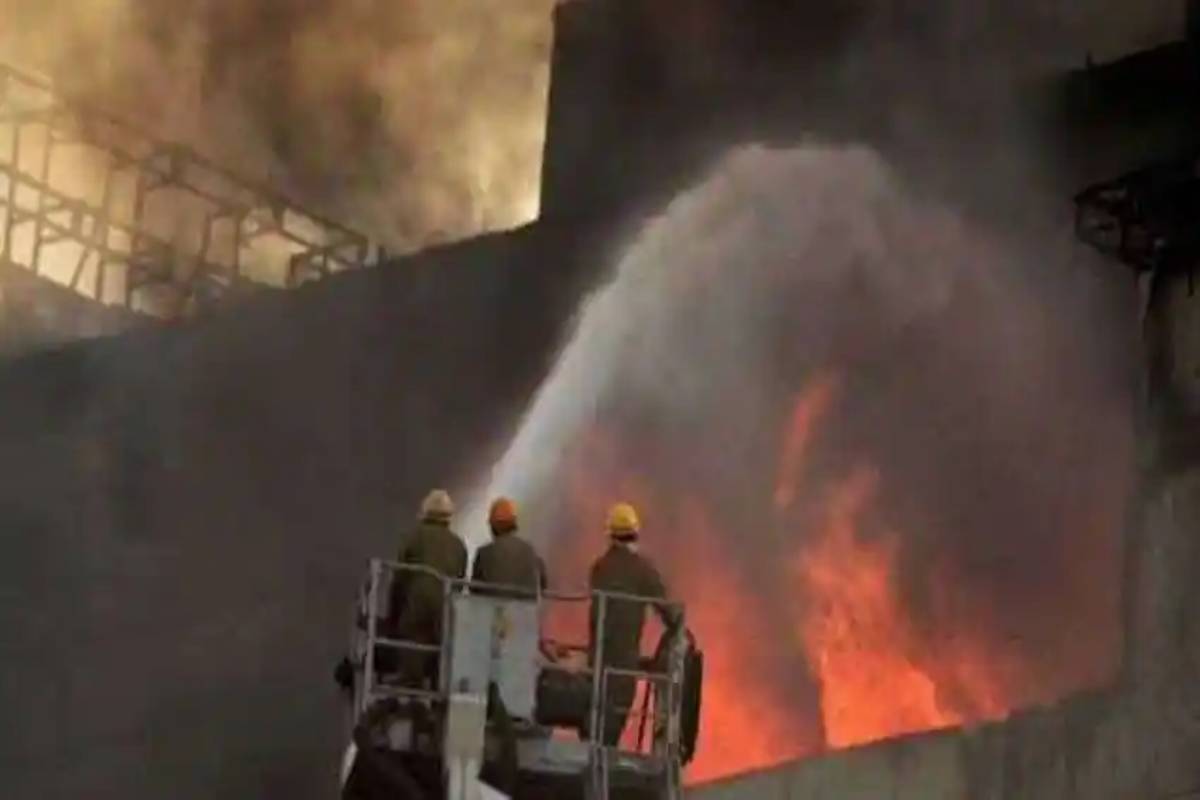The government has amended the rules for ammonium nitrate to curb its pilferage, introduce fire-fighting provisions as well as improve ways to handle and store the chemical in the light of lessons learnt from the deadly Beirut explosion that killed about 140 people.
Nearly 3,000 tons of ammonium nitrate was stored at Beirut’s port for six years that detonated in August 2020, wreaking death and destruction.
Advertisement
Additional Secretary in the Department for Promotion of Industry and Internal Trade (DPIIT) Sumita Dawra said that rules pertaining to five major areas — static and mobile pressure vehicles, calcium carbide, ammonium nitrate, gas cylinders, and petroleum and explosives — were examined in the light of lessons learnt from ammonium nitrate explosion in Beirut.
There was a need to look at the rules to enhance safety, so that such incidents do not happen in India, she said.
She said that to curb pilferage of ammonium nitrate, provisions have been made to import the chemical in bagged form only, as this will help in reducing the handling of loose chemicals at ports and enhance safety.
“Provisions have been made for adequate fire-fighting facilities and shelters for security guards,” she told reporters here.
Ammonium nitrate received at the ports is now required to be removed/transferred to the nearby storage houses situated 500 meter beyond the port area, she added.
The capacity for storage of the hazardous chemical in small store houses has been enhanced by rationalizing the space and quantity requirement.
Besides, the rule has been amended to allow auction of the seized lots of ammonium nitrate, in a bid to ensure safe and speedy disposal.
Dawra also said that the amendments include provision for adequate fire-fighting facilities in storage and handling areas, improvement of flooring in storage and handling area, provision for auction of serviceable seized ammonium nitrate and disposal in case it is not fit for use, and specification of safety distance from port area has also been prescribed.
“In order to promote ease of doing business, the transfer of ammonium nitrate from one location to another of the same licensee has been permitted now. The rules have been amended to exclude regulation of stevedores (agency handling loading / unloading on ships),” she said.
The time for disposal (including enquiry, decision to grant or refuse) of the application for seeking ‘No Objection Certificate’ from District Authority or Director General of Mine Safety has also been reduced from six months to three months.
Regarding Calcium Carbide (Amendment) Rules, 2021, the additional secretary informed that to reduce compliance burden, PESO (Petroleum and Explosives Safety Organisation) has increased the validity of license for storage of the chemical from three to ten years.
Also, provision for online fees payment facility has been provided in the rules.
To monitor premises for storage of Calcium Carbide, provision of geo-mapping of the premises has been incorporated in the Rules and will be made available to the concerned state and central authorities.
Further talking about Static and Mobile Pressure Vessels (unfired) (Amendment) Rules, 2021, she said that the changes have been made to introduce the concept of a third-party inspecting agency to carry out the work related to certification, testing, inspection and safety audit of the licensed premises.
To increase the number of competent persons to conduct testing and certification, the guidelines on minimum experience required has been reduced from ten to five years.
“Provisions have now been incorporated in the rules to allow transportation of cryogenic compressed gases such as Oxygen, Argon, Nitrogen, LNG through ISO containers in domestic areas,” she said.
This will help to transport Liquid Oxygen from surplus areas to deficit areas and promote multimodal transportation (by road, rail and waterways) of these gases and reduce the transportation cost as well as time.











